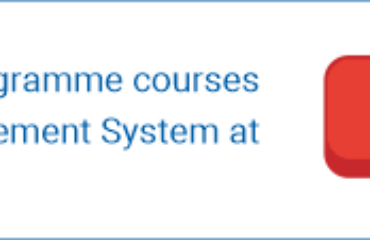
RECIPE FOR INNOVATION
To “hack” means to crack a problem or discover its solution. In information technology, it has the connotation of breaking into security systems. Hackathons are competitions designed to do the first. Some hackathons are hardware-based, like designing a new product, some are software-based, but there are hackathons that are really about exploring new solutions to old problems in the traditional non-tech-based sense – that is looking at business processes (in our case, development processes) and how these can be more appropriate, more responsive, more impactful.
Risdianto Irawan and I had a simple programme for the AHAckathon when we started to plan the event. The idea was to set the rules and parameters, launch the clock, check-in with the teams, then wait 48 hours to complete and collect the final entries. The game changer was when HELP Logistics introduced us to Impact Week and launchlabs. That changed the way we organised the AHAckathon for the better.
Impact Week is a not-for-profit organisation that promotes innovation and entrepreneurship skill development in developing and emerging economies by using Design Thinking to develop sustainable growth solutions. Meanwhile, launchlabs Berlin supports start-ups and teams in applying design thinking and other agile approaches to optimise the process of innovation to benefit organisations.
Michael Koegel of Impact Week designed the three-day event using the Design Thinking process. He brought in 10 professional Design Thinking coaches to guide the AHAckathon teams from problem sensing to ideation, prototyping, validation and pitch preparation. The coaches were start-uppers themselves or had a rich experience coaching other start-ups. If I were competing in AHAckathon, just the opportunity to learn about the Design Thinking process and go through it with an expert coach would already be a win in itself!
If you came to witness how through AHAckathon, more than 50 students and professionals who knew nothing about humanitarian logistics, came together, some of them meeting for the first time, and within 48 hours came up with apps to solve our six HELiX design challenges, you would be as amazed as I was at how that was achieved within a very short period of time. You might think the apps were not impressive or groundbreaking but to me they were, and that is because I know that the hackers put their heart and soul into what they were doing to help the humanitarian community and disaster-at-risk communities to have the tools accessible to them to make better decisions and to be more resilient.
The problem-solving process would not have been a success without the mentors and experts who shared their knowledge and experience in humanitarian logistics. Part of the Design Thinking process is to interview users and experts. This subgroup in AHAckathon included those experts on the topics that the teams were working on as well as community leaders, decision-makers and user groups – those who have experienced disasters and/or are the target users of the apps themselves. Organising the technical experts was the much easier part – with thanks to our partners who were always rolling up their sleeves for the AHA Centre: the United Nations Humanitarian Resource Depot (UNHRD) and World Food Programme, and our DELSA Satellite Warehouse hosts, Office of the Civil Defense of the Philippines and the Thailand Department of Disaster Prevention and Mitigation. I would also like to thank a good friend and colleague of mine who agreed to be a mentor at the last minute, Shirley Bolanos who wears many hats such as decision-maker (as part of the regional DRRM council), victim (she lives in the most disaster-prone region in the Philippines) and as a humanitarian worker who has responded to many disasters in the country.
And finally, kudos to the seven teams who devoted their time, energy, creativity and experience, you were the protagonists and main ingredients in the success of AHAckathon!
RECIPE FOR INNOVATION IN HUMANITARIAN LOGISTICS
INGREDIENTS:
- ▸ On-point statement of the problem (user perspective is best)
- ▸ Overflow of ideas (no measuring cup required)
- ▸ New pairs of lenses for looking at the same problem
- ▸ Indomitable spirit of discovery
- ▸ “So what if, then what?” mindset
- ▸ There-must-be-a-better-way-to-do-this attitude
STEPS:
- ▸ Try on new pairs of lenses to look at the problem then ask, “So what if? Then what?”. Talk to different stakeholders who will use, support or oppose your idea. Repeat using your indomitable spirit of discovery.
- ▸ State the problem using the different lenses you have discovered. Be a child, be a victim, be a decision-maker, be a pregnant woman lining up for your service. What is preventing them from getting the most out of your service or idea?
- ▸ Brainstorm ideas, do not sift, pound nor crush. Let ideas run wild and overflow.
- ▸ Use what is left of your indomitable spirit of discovery to try out the solutions. Repeat the process until you feel you have nailed a human-centred solution. It should taste sweet, not leaving a bad taste in the process.
- ▸ Never give up. Just keep pushing forward.
- ▸When you find the right solution, go back to step 1 to see how you can further improve your solution.
Written by : Gaynor Tanyang | Photo Credit: AHA Centre










